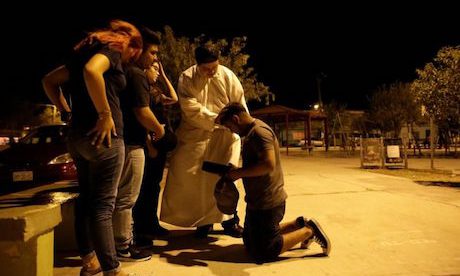Fr Gregorio López Gorostieta thought he had done enough to stay safe on the night of December 21, 2014. He had spent a long day celebrating Masses and overseeing a religious festival at the cathedral of Ciudad Altamirano, in southwestern Mexico’s troubled Guerrero state.
The end-of-year collection – to fund Asunción seminary, where he taught – had been substantial, so it was late when he finished counting the donations. At 11.30pm, he locked the money in the cathedral and drove back to the seminary. But the priest who locals nicknamed Goyito (“Little Greg”) never arrived.
Fr Fidencio Avellaneda, his colleague at the seminary, describes what happened next: “The seminarians say a group of armed men were waiting for him, because they wanted to rob him, thinking he had the money. When he refused [to give them money], they took him away.”
The disappearance of the well-liked priest – known for his voracious reading habits and crunching tackle on the football pitch – marked a turning point for locals. Another priest of the diocese, Fr Ascensión Acuña Osorio, had been found dead in a river in suspicious circumstances the previous September.
November had brought news that the body of a third cleric, Fr John Ssenyondo, had been discovered in a mass grave in nearby Ocotitlán.
After Fr López Gorostieta disappeared, Ciudad Altamirano’s bishop, Maximino Martínez, led 30 priests and hundreds of protesters through the streets, demanding the priest’s return. But the protests were in vain: Padre Goyito’s body was found on Christmas Day, strangled and dumped at the edge of the Acapulco-Iguala highway.
“It hit us hard,” says Fr Avellaneda. “Gregorio was very dedicated, and he went about his ministry with real affection for the people.
“The real challenge is the same as ever: to stay safe. I no longer travel after dark, except when a parishioner is very sick. When I do, I always travel accompanied.” Continue reading
Source & Image
- Catholic Herald article by Tim MacGabhann
News category: Features.




